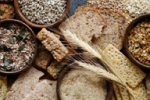 Obesity is a chronic and increasingly common disease globally characterized by excess body fat. It develops gradually and often persists throughout life.1
Obesity is a chronic and increasingly common disease globally characterized by excess body fat. It develops gradually and often persists throughout life.1
Obesity is a state of excess adipose tissue mass. Obesity should not be defined by body weight alone, as muscular individuals may be overweight by arbitrary standards without having increased adiposity. At a similar BMI, women have more body fat than men. Furthermore, regional fat distribution may influence the risks associated with obesity1
The weight distribution of almost the whole population is shifting upwards: the slim are becoming less slim while the fat is getting fatter. This includes the availability of cheap and heavily marketed energy-rich foods, the increase in labor-saving devices (e.g. lifts and remote controls) and the rise in passive transport (cars as opposed to walking, cycling, or walking to public transport hubs). To combat the health impact of obesity, therefore, we not only need to help those who are already obese but also develop strategies that impact on the whole population and reverse the obesogenic environment.1
Excess weight has been associated with mortality and morbidity.3
ETIOLOGY
- Obesity can result from increased energy intake, decreased energy expenditure, or a combination of the two.
- Environmental and genetic factors; social factors and economic conditions also represent important influences.
- The recent increase in obesity can be attributed to a combination of excess caloric intake and decreasing physical activity.
- Poorly understood reasons for increased food assimilation due to dietary composition have also been postulated, as have sleep deprivation and an unfavorable gut flora.
- The susceptibility to obesity is polygenic in nature, and 30–50% of the variability in total fat stores is believed to be genetically determined. Among monogenic causes, mutations in the melanocortin receptor 4 are most common and account for 1% of obesity in the general population and 6% in severe, early-onset obesity.1
CLINICAL FEATURES
- Obesity has major adverse effects on health. Increased mortality from obesity is primarily due to cardiovascular disease, hypertension, gall bladder disease, diabetes mellitus, and several types of cancer, such as cancer of the esophagus, colon, rectum, pancreas, liver, and prostate, and gallbladder, bile ducts, breasts, endometrium, cervix, and ovaries in women.
- Sleep apnea in severely obese individuals poses serious health risks.
- Obesity is also associated with an increased incidence of steatohepatitis, gastroesophageal reflux, osteoarthritis, gout, back pain, skin infections, and depression.
- Hypogonadism in men and infertility in both sexes are prevalent in obesity; In women this may be associated with hyperandrogenism (polycystic ovarian syndrome).1
- Drug-induced weight gain is also common in those who use antidiabetes agents, glucocorticoids, psychotropic agents, mood stabilizers (lithium), antidepressants, or antiepileptic drugs. Insulin-secreting tumors can cause overeating and weight gain.1
Body Mass Index
In 1998, the US National Heart, Lung and Blood Institute established guidelines to define ‘overweight’ and ‘obesity’ and now Indian guidelines have modified these values. The parameter used is BMI (also called Quetelet Index) and is calculated using the formula:
BMI = Weight (kg) / [Height (m) 2= kg/m2
However, the drawback of the BMI method is that it does not account for weight distribution and lean body mass. Also, very muscular or very short individuals may be classified as obese when they are not.2 and 3
TREATMENT OF OBESITY
Obesity is a chronic medical condition that requires ongoing treatment and lifestyle modifications. Treatment is important because of the associated health risks, but is made difficult by a limited repertoire of effective therapeutic options. Weight regain after weight loss is common with all forms of therapy. The urgency and selection of treatment modalities should be based on BMI and a risk assessment. Diet, exercise, and behavior therapy are recommended for all pts with a BMI≥25 kg/m2.1, 2 and 3
Strategies for Weight Loss and Weight Maintenance
Lifestyle advice
- Behavioral modification to avoid some of the effects of the ‘obesogenic’ environment is the cornerstone of long-term control of weight.
Adopting regular eating patterns and maximizing physical activity are advised, with reference to the modest extra activity required to increase physical activity level (PAL) ratios.

 Where possible, this should be incorporated in the daily routine (e.g. walking rather than driving to work), as this is more likely to be sustained. Alternative exercise (e.g. swimming) may be considered if musculoskeletal complications prevent walking.
Where possible, this should be incorporated in the daily routine (e.g. walking rather than driving to work), as this is more likely to be sustained. Alternative exercise (e.g. swimming) may be considered if musculoskeletal complications prevent walking.- Changes in eating behavior (including food selection, portion size control, avoidance of snacking, regular meals to encourage satiety, and substitution of sugar with artificial sweeteners) should be discussed. Regular support from a dietitian or attendance at a weight loss group may be helpful.1, 2 and 3
Bariatric surgery in indicated for patients with severe obesity (BMI ≥40 kg/m2) or moderate obesity (BMI ≥35 kg/m2) associated with a serious medical condition, with repeated failures of other therapeutic approaches, at eligible weight for >3 years, capable of tolerating surgery, and without addictions or major psychopathology. The decision should always be a medical decision and as per advise from physician. Weight-loss surgeries are either restrictive (limiting the amount of food the stomach can hold and slowing gastric emptying), such as laparoscopic adjustable silicone gastric banding, or restrictive-malabsorptive. These procedures generally produce a 30–35%weight loss that is maintained in about 40% of patients at 4 years. In many patients, there is significant improvement in co-morbid conditions including type 2 diabetes mellitus, hypertension, sleep apnea, hyperlipidemia, and cardiovascular events. The metabolic benefits appear to be the combined result of weight loss and physiologic responses of gut hormones and adipose tissue metabolism.1, 2 and 3
Complications include stomal stenosis, marginal ulcers, and dumping syndrome. Procedures with a malabsorptive component require lifelong supplementation of micronutrients (iron, folate, calcium, vitamins B12 and D) and are associated with risk of islet cell hyperplasia and hypoglycemia.1, 2 and 3
SCOPE OF HOMEOPATHY
Homeopathy can help in correcting the metabolism and thus help reduce weight when accompanied by exercise and a healthy diet. Homeopathy also helps in treating causative conditions which cause or increase obesity like PCOS and hormonal disorders thus correcting the cause and helping in treatment of weight reduction. Medicines given are totality based and help in overall correction of the body.
DIET RECOMMENDATION FOR OBESITY
Beneficial foods6
 Foods that are low in fat and release energy into the bloodstream slowly and steadily are the most useful for obese people trying to lose weight.
Foods that are low in fat and release energy into the bloodstream slowly and steadily are the most useful for obese people trying to lose weight.
- Lean beef, pork, lamb, chicken, turkey, and white fish are all good sources of protein that do not supply large amounts of fat. These foods can be alternated with those containing vegetable protein, such as peas, beans, lentils, and tofu.
- Protein-rich foods should be included in each meal, since they appear to help trigger the parts of the brain that tell us when we are full.
 Pasta, basmati rice, rye bread, and porridge are useful carbohydrates for those wishing to lose weight. These foods are digested slowly and lead to a gradual raise in blood sugar levels, which leaves the stomach feeling fuller for longer.
Pasta, basmati rice, rye bread, and porridge are useful carbohydrates for those wishing to lose weight. These foods are digested slowly and lead to a gradual raise in blood sugar levels, which leaves the stomach feeling fuller for longer.- Yogurts and fruits make good snacks since they cause only small rises in blood sugar, helping to keep the biochemistry of the blood balanced.
- Pears contain soluble fiber, and are low in calories. They
- Release sugars slowly, making the stomach feel fuller for longer.
 Vegetables such as salad leaves, brassicas and sprouting vegetables are very low-calorie density, which means that
Vegetables such as salad leaves, brassicas and sprouting vegetables are very low-calorie density, which means that
they can be consumed in large volumes without providing the body with large amounts of energy.- Celery, in particular, contains very few calories and virtually no fat, making it a useful addition to a weight watchers diet.
- Wholegrain breads, cereals, rice, and pasta, and fruits and vegetables contain fiber, which leaves the stomach feeling fuller for longer.
Foods to Avoid6
 Fried foods, sausages, burgers, and other processed meat products are rich in fat and have twice the calories of carbohydrate-rich and protein-rich foods.
Fried foods, sausages, burgers, and other processed meat products are rich in fat and have twice the calories of carbohydrate-rich and protein-rich foods.- Butter, margarines, lard, and oils are high in fat and should be consumed in moderation. Olive oil contains as much fat as any other oil.
- Biscuits, cakes, pies, and chocolates are high in fat and should be avoided whenever possible.
 Sugary foods cause a rapid increase in the amount of sugar in the bloodstream, which results in the release of the hormone insulin. Insulin removes excess sugar from the blood, which may then be stored as fat.
Sugary foods cause a rapid increase in the amount of sugar in the bloodstream, which results in the release of the hormone insulin. Insulin removes excess sugar from the blood, which may then be stored as fat.
REFERENCES
- Kasper D.L., Fauci A.S., Hauser S.L., Longo D.L., Jameson J.L., Loscalzo J. Harrison’s Manual of Medicine. 19th rev. ed.United States: McGraw Hill; 2016. 1222p.
- Ralston S.H., Penman I.D., Strachan M.W.J., Hobson R.P. Davidson’s, Principles and Practice of Medicine. 23rd rev.ed. Edinburgh; Churchill Livingstone/Elsevier; 2018. 1417p.
- API Textbook of Medicine. 9th rev.ed. Mumbai: The Association of Physicians of India, Jaypee Brothers Medical Publishers (P) Ltd; 2012. 2066p.
- A Dictionary of Domestic Medicine by John H.Clarke….
- ABC Manual of Materia Medica and Therapeutics by G H Clarke….
- Ursell A. The Complete Guide Healing Foods. 1strev.ed. London: Dorling Kindersley Ltd., 2000. 256p.
